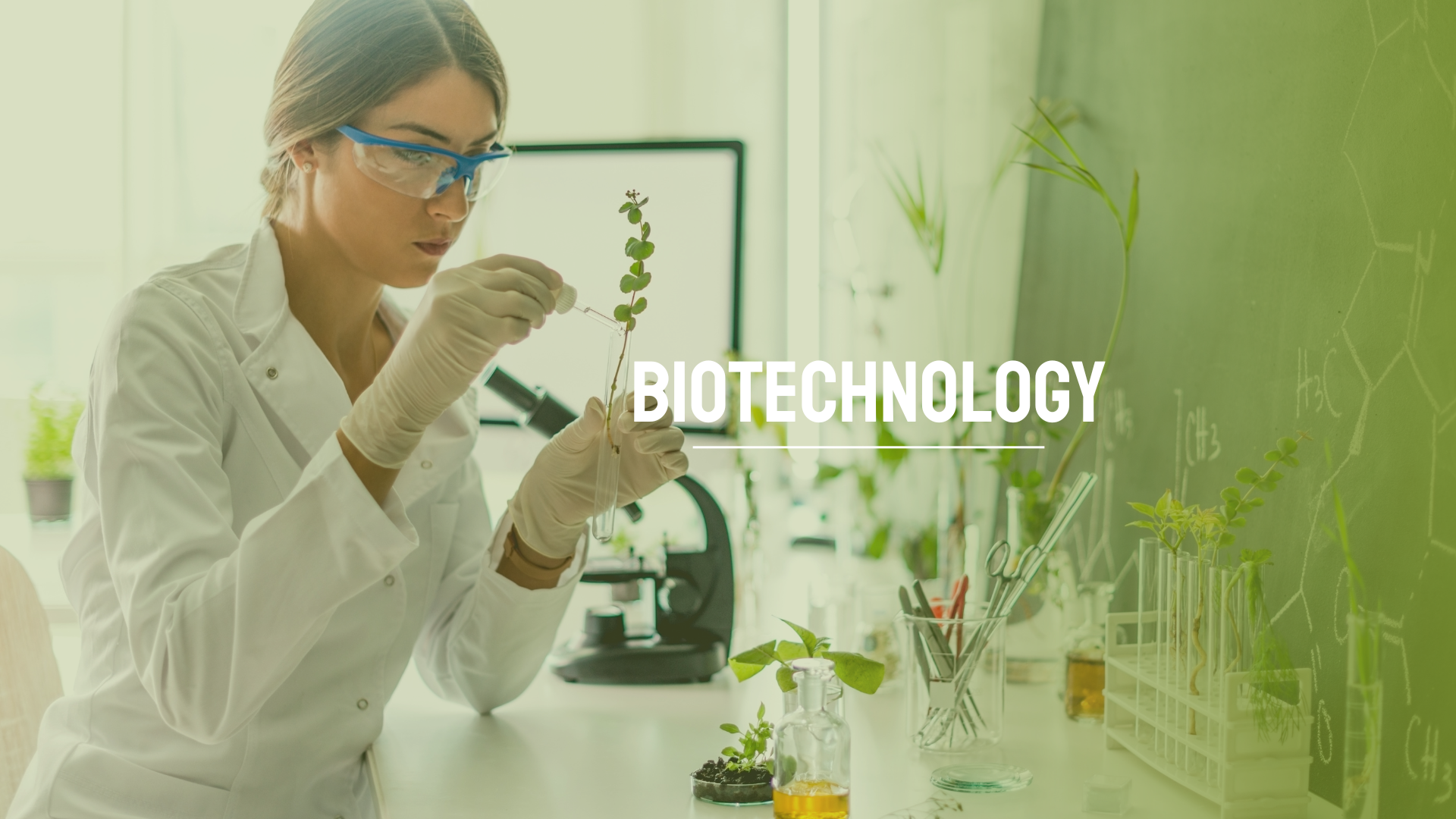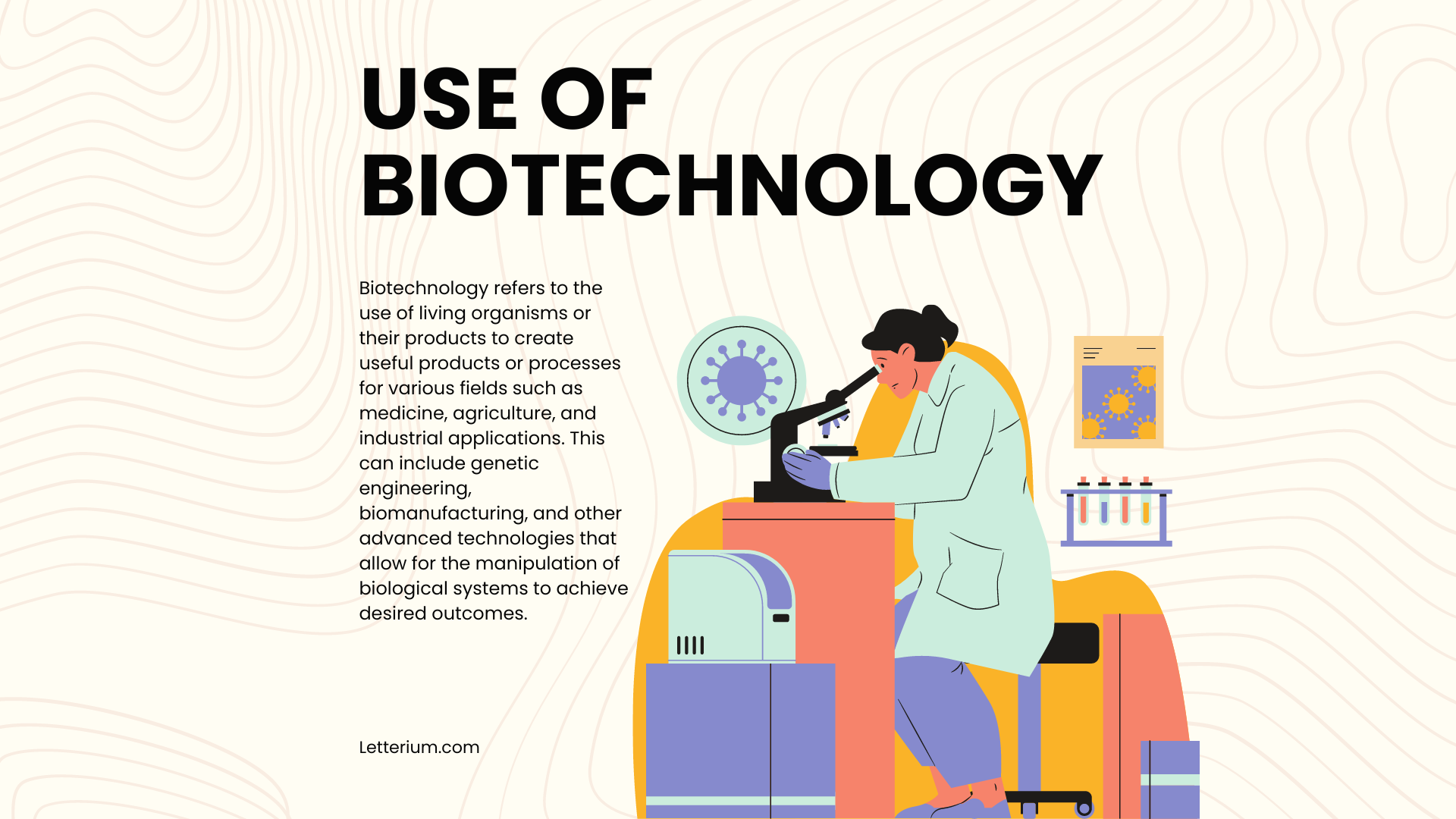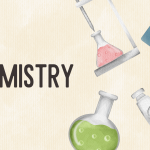Biotechnology, a fusion of biology and technology, has emerged as one of the most revolutionary and beneficial scientific advancements of the modern era. It leverages cellular and biomolecular processes to develop technologies and products that help improve our lives and the health of our planet. This comprehensive guide delves into the definition, types, applications, and departments within biotechnology, providing insights into its profound impact on various sectors including healthcare, agriculture, environmental conservation, and industrial processes.
Definition of Biotechnology
Biotechnology is an interdisciplinary field that incorporates principles from biology, chemistry, physics, engineering, and information technology to manipulate living organisms or their components for the production of knowledge, goods, and services. The core of biotechnology lies in understanding the genetic, biochemical, and cellular processes of living organisms and utilizing this knowledge to solve problems and create products that serve societal needs.

Biotechnology History
The history of biotechnology is a rich tapestry that intertwines ancient practices with modern scientific breakthroughs. Its journey from the dawn of civilization to the cutting-edge technologies of today reveals a fascinating evolution of human ingenuity and understanding of the natural world. Here is an overview of the key milestones in the history of biotechnology:
Ancient Biotechnology (Pre-18th Century)
- Early Beginnings: The roots of biotechnology can be traced back to prehistoric times when humans first began domesticating animals and cultivating plants for food, around 10,000 BC. This form of biotechnology was based on selective breeding to enhance desirable traits.
- Fermentation: Around 6000 BC, the Sumerians and Babylonians mastered the art of fermentation, using yeast to produce beer. The ancient Egyptians also used fermentation to bake leavened bread and brew beer, showcasing early biotechnological processes for food production.
Industrial Revolution (18th - 19th Century)
- Scientific Foundations: The 18th and 19th centuries saw the establishment of scientific principles underlying biotechnological processes. The discovery of microbes by Antonie van Leeuwenhoek and the subsequent development of microbiology laid the groundwork for understanding fermentation and disease.
- Industrial Fermentation: Louis Pasteur's research in the 19th century proved that fermentation was caused by microorganisms, leading to the development of pasteurization to prevent food spoilage. This period also saw the industrial production of products like vinegar, cheese, and alcohol through microbial fermentation.
Early 20th Century Advances
- Genetics: The rediscovery of Gregor Mendel's work on genetics at the turn of the 20th century provided a scientific basis for the manipulation of hereditary traits in plants and animals, leading to improved breeds and strains.
- Antibiotics: The discovery of penicillin by Alexander Fleming in 1928, followed by its mass production in the 1940s, marked a significant milestone in medical biotechnology, ushering in the era of antibiotics.
Biotechnology Boom (Late 20th Century)
- Recombinant DNA Technology: The 1970s witnessed a revolution in biotechnology with the development of recombinant DNA technology. Herbert Boyer and Stanley Cohen's successful cloning of foreign DNA into a bacterial plasmid in 1973 paved the way for genetic engineering.
- Biopharmaceuticals: The first genetically engineered product, human insulin produced by genetically modified bacteria, was marketed in 1982. This breakthrough demonstrated the potential of biotechnology in producing complex therapeutic proteins.
- PCR and Genome Sequencing: The invention of the polymerase chain reaction (PCR) by Kary Mullis in the 1980s revolutionized genetic analysis, enabling rapid amplification of DNA sequences. The Human Genome Project, completed in 2003, mapped and sequenced the entire human genome, providing invaluable data for research and medicine.
21st Century: Biotechnology Today
- CRISPR-Cas9 Genome Editing: The development of CRISPR-Cas9 technology in the 2010s has allowed for precise editing of the genome, holding promise for curing genetic disorders, improving crop yields, and more.
- Synthetic Biology: This emerging field combines biology and engineering to design and construct new biological parts, devices, and systems. It aims to create organisms with novel functions for a variety of applications, from biofuel production to medicine.
- Personalized Medicine: Advances in genomics and biotechnology have led to the growth of personalized medicine, where treatments are tailored to the individual's genetic makeup, improving efficacy and reducing side effects.
The history of biotechnology is a testament to human curiosity and the desire to harness the power of biological processes for the betterment of life on Earth. From ancient fermentation techniques to the latest in genetic engineering and synthetic biology, biotechnology continues to evolve, offering new solutions to medical, agricultural, and environmental challenges.
Types of Biotechnology
Biotechnology is a vast field that intersects with various disciplines, leading to its classification into different types based on application areas or the types of organisms it deals with. These classifications help in understanding the specific focus and potential impacts of biotechnological applications across different sectors. Here's an overview of the primary types of biotechnology:
1. Red Biotechnology (Healthcare Biotechnology)
Red biotechnology is primarily concerned with medical processes and applications. It includes the development of vaccines and antibiotics, the engineering of genetic cures through genomic manipulation, and the creation of new methods for disease detection. Red biotechnology plays a crucial role in developing personalized medicine, regenerative therapies, and biopharmaceuticals, aiming to improve health outcomes and extend human lifespan.
2. Green Biotechnology (Agricultural Biotechnology)
Green biotechnology focuses on agricultural processes to increase crop yields, enhance nutritional values, develop drought and pest resistance, and reduce farming's environmental footprint. It involves the genetic modification of plants to achieve desired traits, such as increased resistance to pests or improved nutritional content. Green biotechnology is pivotal in addressing food security challenges and promoting sustainable agricultural practices.
3. White Biotechnology (Industrial Biotechnology)
White biotechnology is applied to industrial processes, including the production of chemicals, materials, biofuels, and energy. It uses living cells and enzymes to synthesize products in a more environmentally friendly and sustainable manner. White biotechnology aims to reduce the environmental impact of industrial processes by minimizing waste and energy consumption and using renewable resources as feedstocks.
4. Blue Biotechnology (Marine and Aquatic Biotechnology)
Blue biotechnology refers to the application of biotechnological methods to marine and aquatic environments. It encompasses the exploration and exploitation of the ocean's biodiversity for pharmaceuticals, health products, chemical products, and environmental applications. Blue biotechnology is involved in the development of marine-derived drugs, bioactive compounds, and in efforts to conserve marine biodiversity.
5. Yellow Biotechnology (Food Biotechnology)
Yellow biotechnology is concerned with food production, including the development of fermented food products and the use of biotechnology in food processing and preservation. It aims to improve food safety, nutritional values, and shelf life, as well as to reduce allergenic properties and enhance flavor. Yellow biotechnology includes the use of enzymes in food processing and the genetic modification of microorganisms for the production of vitamins, antibiotics, and other beneficial compounds.
6. Grey Biotechnology (Environmental Biotechnology)
Grey biotechnology is focused on environmental protection and remediation. It uses biotechnological solutions to clean up contaminated environments, treat waste, and monitor environmental health. Applications include bioremediation, where microorganisms are used to detoxify polluted environments, and the development of bio-based materials that are biodegradable and have a lower environmental impact.
7. Gold Biotechnology (Bioinformatics)
Gold biotechnology, or bioinformatics, involves the application of computer technology to manage and analyze biological data. It plays a critical role in understanding complex biological processes, the development of genomic medicine, and the identification of genetic markers for diseases. Bioinformatics is essential for the analysis of genetic sequences, protein modeling, and the simulation of biological systems.
Each type of biotechnology has its unique applications and challenges, but all share the common goal of applying biological knowledge and techniques to solve problems, improve lives, and protect the environment.
Applications of Biotechnology

Biotechnology, an interdisciplinary field that merges concepts from biology with technological applications, has significantly transformed various sectors including healthcare, agriculture, environmental management, and industrial processes. Its applications are diverse, addressing some of the most pressing challenges of our time. Below are key applications of biotechnology across different fields:
Healthcare and Medicine
- Drug Production: Biotechnology has revolutionized the production of drugs, making it possible to produce more effective and safer medications, including biopharmaceuticals that target diseases at a molecular level.
- Gene Therapy: This involves correcting defective genes responsible for disease development, offering potential cures for genetic disorders.
- Personalized Medicine: Tailoring medical treatment to individual characteristics, practices, and genetic makeup of a patient, improving the efficacy and safety of treatments.
- Vaccines: Development of new vaccines using recombinant DNA technology, including those for diseases that were previously difficult to vaccinate against.
- Regenerative Medicine: Using stem cells to regenerate damaged tissues and organs, offering new hope for patients with injuries or degenerative diseases.
Agriculture
- Genetically Modified Organisms (GMOs): Creating plants and animals with desirable traits, such as increased yield, drought tolerance, and pest resistance, to improve food security and reduce dependence on chemical pesticides.
- Biofertilizers and Biopesticides: Utilizing microorganisms to enhance plant growth and protect crops from pests and diseases, reducing the environmental impact of chemical inputs.
- Animal Husbandry: Enhancing breeding techniques and genetic modification to improve livestock production, disease resistance, and nutritional qualities.
Environmental Biotechnology
- Bioremediation: Employing microorganisms to detoxify polluted environments, such as oil spills and heavy metal contamination, restoring natural conditions.
- Biofuels: Producing renewable energy from biological materials, such as ethanol from corn or biodiesel from algae, reducing dependence on fossil fuels.
- Waste Management: Converting organic waste into useful products, including compost, biogas, and bioenergy, through microbial processes.
Industrial Biotechnology
- Enzyme Technology: Using enzymes in the manufacturing of products such as detergents, textiles, and paper, making processes more efficient and environmentally friendly.
- Biopolymers and Bioplastics: Developing sustainable materials from biological sources, offering alternatives to petroleum-based plastics.
- Food Processing: Applying biotechnological methods to improve food safety, extend shelf life, and enhance nutritional profiles of food products.
Bioinformatics and Data Analysis
- Genome Sequencing and Analysis: Utilizing computational tools to analyze genetic data, advancing our understanding of genetics, disease mechanisms, and evolutionary biology.
- Drug Discovery and Development: Accelerating the identification of potential drug targets and the screening of drug candidates through computational models and simulations.
- Agricultural Biotechnology: Analyzing plant genomes to identify genes associated with desirable traits, guiding breeding programs for crop improvement.
Nanobiotechnology
- Drug Delivery Systems: Creating nano-scale drug delivery mechanisms that target specific cells or tissues, improving the efficacy and reducing side effects of treatments.
- Diagnostic Tools: Developing sensitive and precise diagnostic devices for early detection of diseases at the molecular level.
The applications of biotechnology are vast and continuously expanding, driven by ongoing research and technological advancements. By harnessing the power of biological systems and organisms, biotechnology offers innovative solutions to healthcare, environmental, and industrial challenges, contributing significantly to the improvement of human life and the sustainability of the planet.
Departments Within Biotechnology
The biotechnology industry encompasses a wide range of activities that require diverse expertise and specialization. As such, it is organized into several key departments, each focusing on different aspects of biotechnology research, development, production, and commercialization. Here's an overview of the primary departments within biotechnology and their roles:
1. Research and Development (R&D)
The Research and Development department is the backbone of any biotechnology company. It is dedicated to conducting scientific research to discover new knowledge and to the development of new products or the improvement of existing ones. This department is where innovative ideas are born and tested, encompassing everything from basic research in genetics, biochemistry, and molecular biology to product development, preclinical testing, and clinical trials.
2. Quality Control and Quality Assurance (QC/QA)
Quality Control and Quality Assurance are crucial in maintaining the integrity, safety, and efficacy of biotechnological products. QC focuses on the operational aspects, such as testing materials and products at various stages of production to ensure they meet established standards. QA, on the other hand, is more about overseeing the entire process to ensure compliance with regulatory requirements and quality standards. This includes developing, implementing, and maintaining procedures that guarantee the quality of the product from inception through to completion.
3. Manufacturing and Production
This department is responsible for the large-scale production of biotechnological products, ensuring that the processes developed in R&D can be efficiently scaled up for commercial production. It involves managing the complexities of bioprocessing, fermentation, purification, and formulation, all while adhering to strict regulatory standards. The manufacturing department works closely with both R&D and QC/QA to ensure that the final products are produced in a cost-effective, safe, and timely manner.
4. Regulatory Affairs
The Regulatory Affairs department plays a critical role in navigating the complex landscape of legal and regulatory requirements that govern biotechnology. This includes submitting documentation for the approval of new products, ensuring compliance with international standards, and maintaining clear communication with regulatory bodies. The goal is to ensure that all products and processes are in full compliance with the laws and regulations of the jurisdictions in which the company operates.
5. Clinical Affairs
For biotechnology firms involved in the development of medical products, the Clinical Affairs department oversees the design and execution of clinical trials. This includes developing the trial protocol, selecting trial sites, monitoring the trials to ensure compliance with regulatory standards, and analyzing data. Their work is crucial in demonstrating the safety and efficacy of new therapies or medical devices.
6. Sales and Marketing
The Sales and Marketing department is responsible for promoting and selling the company's products. This involves understanding the market, identifying potential customers, and developing strategies to meet sales targets. They work closely with the R&D and regulatory affairs departments to ensure that their strategies align with the company’s product offerings and compliance obligations.
7. Business Development
This department focuses on strategic opportunities for growth, including partnerships, collaborations, licensing deals, and acquisitions. Business Development is crucial for expanding a company's reach, accessing new markets, and diversifying its product portfolio.
8. Intellectual Property (IP) Management
IP Management is critical in protecting the innovations and proprietary technologies developed by a biotechnology company. This department is responsible for patent filings, protecting trade secrets, and managing IP rights and licenses. Effective IP management ensures that a company can capitalize on its inventions and protect them from unauthorized use.
Each department within a biotechnology company plays a vital role in its success. From discovering new scientific breakthroughs in the R&D department to ensuring product quality, navigating regulatory landscapes, and driving sales, the collective efforts of these departments enable the biotechnology industry to continue advancing and contributing to various sectors, including healthcare, agriculture, and environmental management.
Conclusion
The journey through the realm of biotechnology from its ancient roots to the modern era highlights a field of science that is profoundly impactful and constantly evolving. Biotechnology's history, spanning thousands of years, demonstrates humanity's long-standing fascination and engagement with the biological world, harnessing its processes for the betterment of human life, health, and the environment.
Today, biotechnology stands at the forefront of scientific innovation, with its applications permeating numerous aspects of daily life and industry. From healthcare, where it offers groundbreaking therapies and personalized medicine, to agriculture, where it promises food security through genetically modified crops. From environmental conservation, where bioremediation techniques clean polluted landscapes, to industrial processes that are made cleaner and more efficient through white biotechnology. The scope and impact of biotechnology are vast and multifaceted.
The types of biotechnology—red, green, white, blue, yellow, grey, and gold—each represent a specific application area, showcasing the versatility and breadth of biotechnological applications. These areas work in tandem to address some of the most pressing challenges of our time, including disease, hunger, environmental degradation, and the sustainable production of energy and materials.
Furthermore, the departments within biotechnology organizations—R&D, quality control and assurance, manufacturing, regulatory affairs, clinical affairs, sales and marketing, business development, and IP management—illustrate the complexity and collaborative nature of biotechnological innovation. These departments reflect the interdisciplinary collaboration required to bring biotechnological products and services from concept to market, underscoring the importance of synergy across scientific, regulatory, and commercial domains.
As we look to the future, the continued advancement of biotechnology holds immense promise. With emerging technologies like CRISPR-Cas9 genome editing and synthetic biology, the potential for innovation is boundless. These advancements could lead to cures for genetic diseases, more resilient and nutritious crops, sustainable energy solutions, and materials that lessen our impact on the planet.
In conclusion, biotechnology is a testament to human ingenuity and the quest for knowledge. It offers a beacon of hope for solving some of the most intractable problems facing humanity and the planet. As we navigate the ethical and societal implications of these technologies, it is crucial to foster a dialogue that balances innovation with responsibility. The future of biotechnology is not just about scientific breakthroughs but also about how we choose to use these technologies to create a sustainable and healthy future for all.


 English
English 
